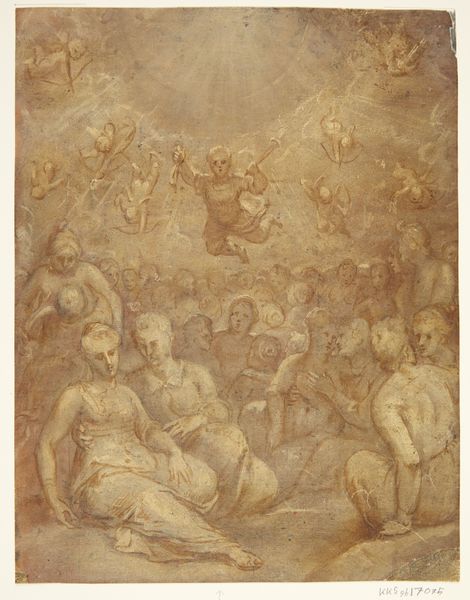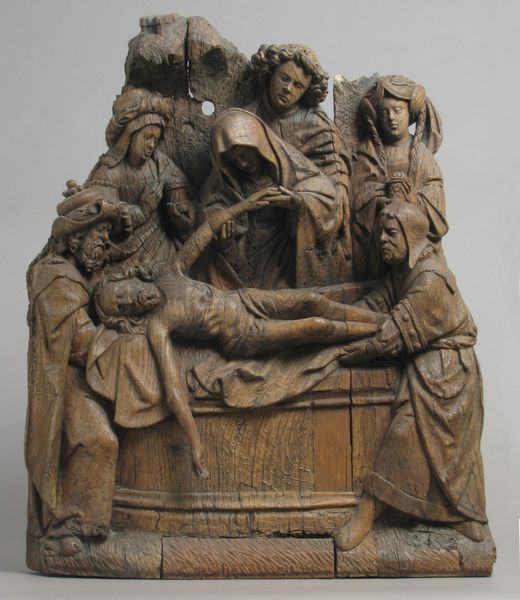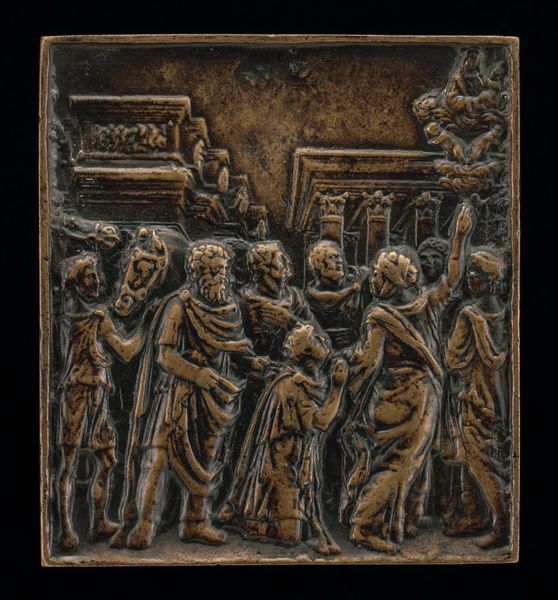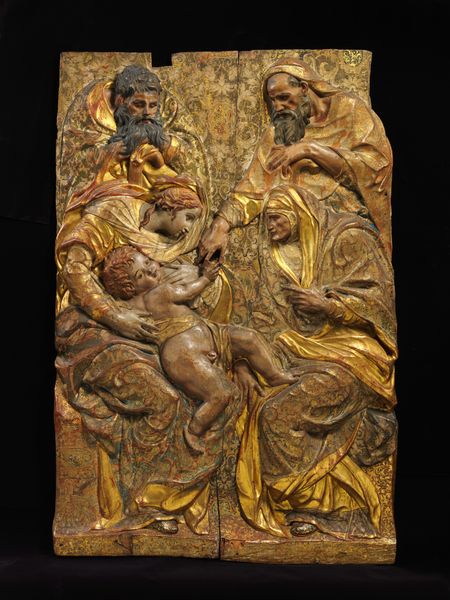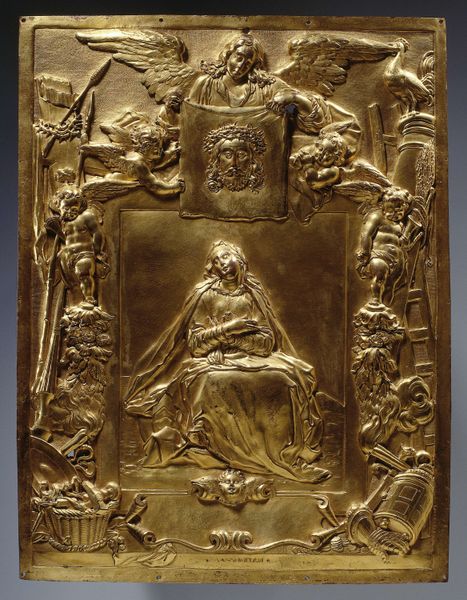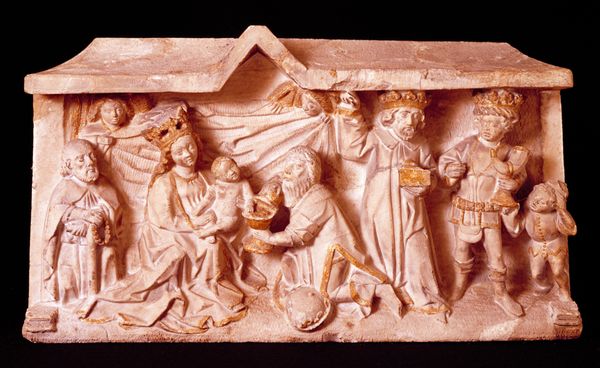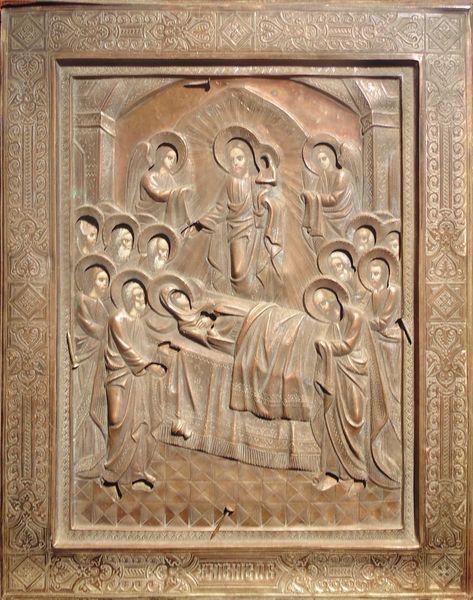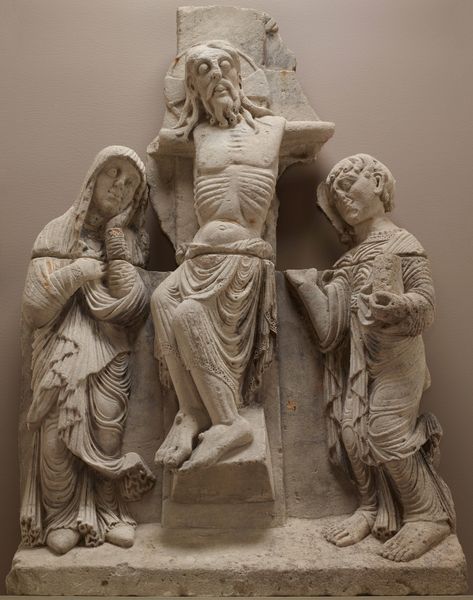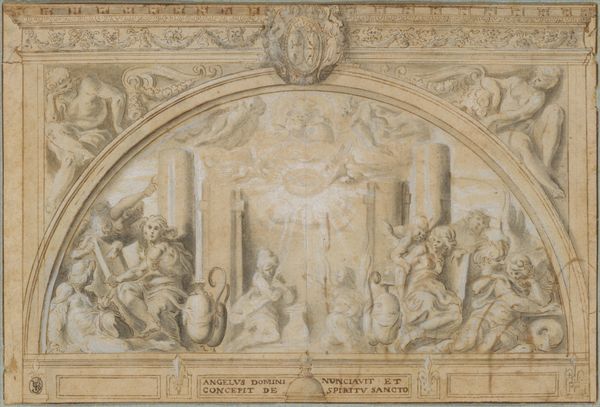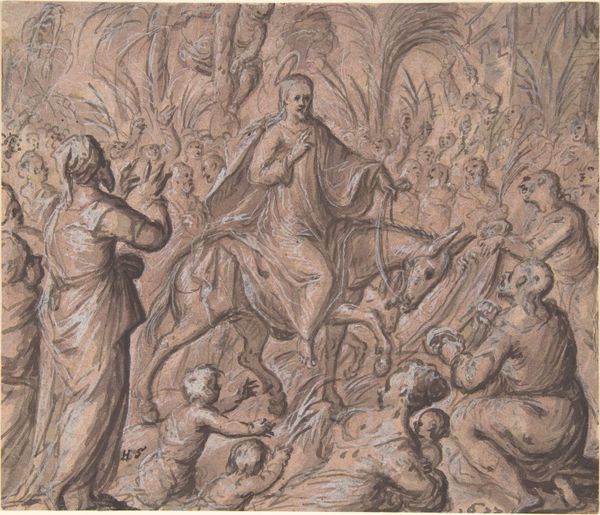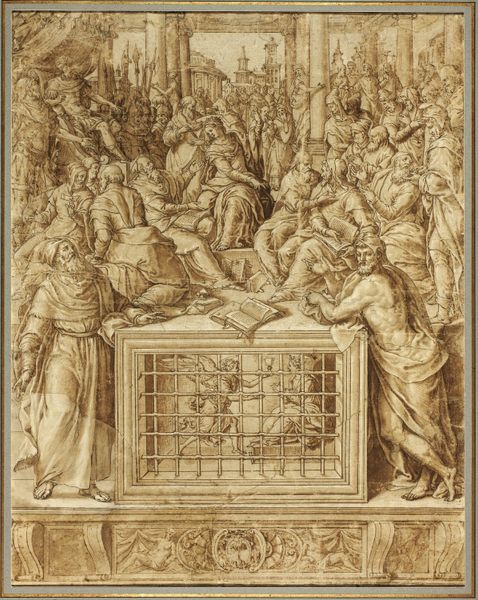
carving, relief, sculpture, wood
#
carving
#
narrative-art
#
sculpture
#
relief
#
figuration
#
oil painting
#
carved into stone
#
sculpture
#
wood
#
history-painting
#
italian-renaissance
Dimensions: overall: 81 × 65 cm (31 7/8 × 25 9/16 in.) framed: 132.72 × 102.87 × 11.11 cm (52 1/4 × 40 1/2 × 4 3/8 in.) framed weight: 92.987 kg (205 lb.)
Copyright: National Gallery of Art: CC0 1.0
Editor: We’re looking at “The Adoration of the Shepherds,” a wood relief sculpture created circa 1475-1485 by Francesco di Simone Ferrucci. I’m immediately struck by its delicate, almost intimate portrayal of this traditional scene. What layers do you see beneath the surface narrative? Curator: This piece exists at a fascinating intersection of religious narrative and socioeconomic realities. The 'Adoration' wasn’t just about piety; it reinforced hierarchies. Think about who is allowed to adore, who holds power, and whose stories are privileged. Who were the shepherds? Lowly, often marginalized figures. Yet, they are central to the story. Editor: That's a good point. Were depictions like these in direct conversation with a society's class structure? Curator: Absolutely. Renaissance art, while beautiful, was deeply entrenched in social politics. Works like this were commissioned by the wealthy elite to demonstrate not only religious devotion, but also to assert their position within the divine order. The idealized figures often obscured the realities of the lives of everyday people, particularly women and those on the margins. Notice the expressions and gestures-- are they uniform? What do those variations communicate about each figure's status and role? Editor: The Virgin Mary seems so serene, yet almost detached from the rawness of childbirth…almost like she is set apart. Curator: Precisely! And how does that idealization contrast with the likely lived experience of women during that time? Thinking critically about whose perspectives are amplified and whose are silenced allows us to unravel the complexities embedded within even seemingly straightforward religious scenes. What have you gathered overall? Editor: That the Adoration becomes less about worship and more of a nuanced assertion of societal roles during the Italian Renaissance, I am intrigued. Curator: I'm glad you see it! These pieces give us so much rich insight.
Comments
No comments
Be the first to comment and join the conversation on the ultimate creative platform.


